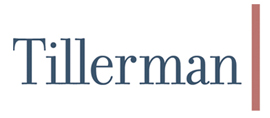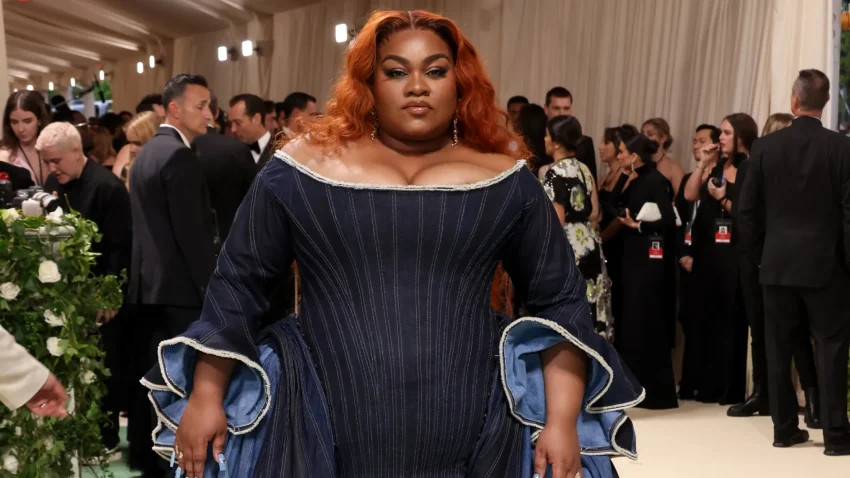The 2024 Met Gala challenged the boundaries between luxury fashion and mass-market retail as Gap and Ebay made bold entrances, sparking discussions on the democratization of couture, the financial implications for brands like Gap, and the societal shift towards inclusivity in high-end fashion.
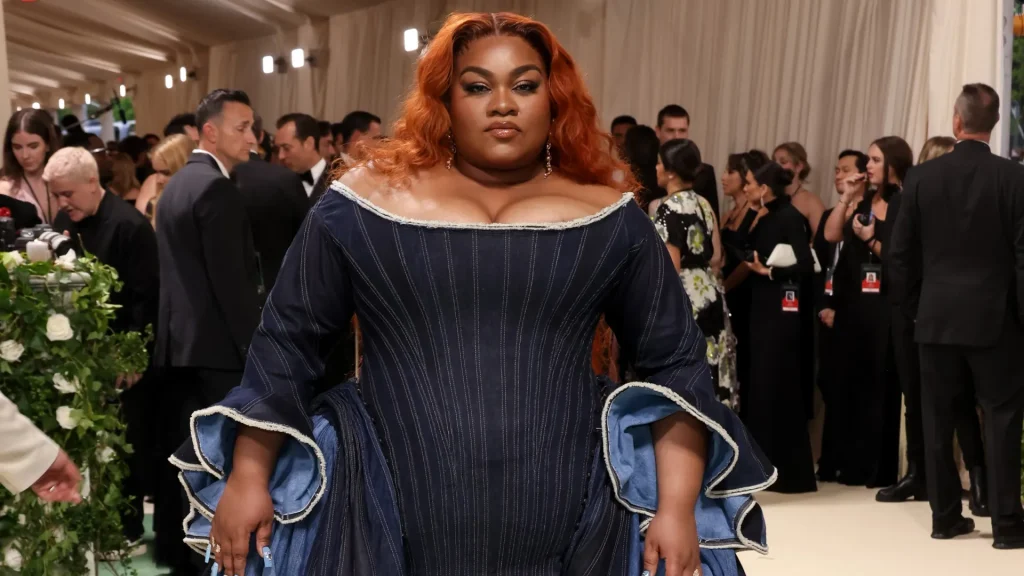
The 2024 Met Gala saw the red carpet graced not only by the seasoned couture designers but also by retail giants like Gap, making their bold entrance into the world of high-end fashion. It was a night that questioned the traditional barriers between the exclusive realms of luxury fashion and mass-market retail, prompting us to explore the implications of this crossover for both industries and their patrons.
The Gala’s Couture Conundrum
Imagine the scene at one of the most illustrious events in the fashion calendar — the 2024 Met Gala — where glittering celebrities parade in opulent creations that epitomize the theme of ‘The Garden of Time.’ In this year’s Gala, the unexpected happened. Amongst the lavishly handcrafted gowns by famed ateliers, we saw something different. Celebrities adorned in stunning pieces sponsored by the likes of eBay and Gap, challenging the age-old notion that couture is the sole domain of luxury houses.
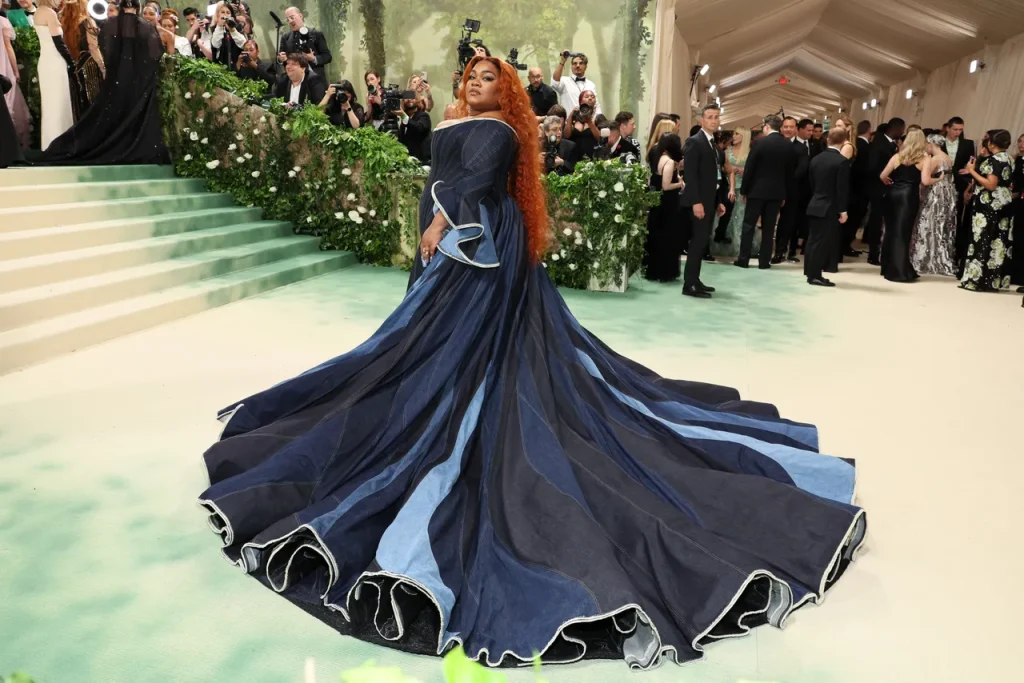
Da’Vine Joy Randolph, the Academy Award-winning star of the summer’s box office smash ‘Holdovers,’ made headlines in an unexpected ensemble — she donned a gown from Gap by none other than design luminary Zac Posen. Posen, who made headlines of his own by twining his creative flair with Gap’s iconic denim, orchestrated a sartorial symphony that echoes unpredictability reminiscent of the cultural zeitgeist.
However, Gap wasn’t the only disruptor to demand attention. Ebay, the emblem of the decentralized marketplace, collaborated with Madelyn Cline, the meteoric star of Netflix’s “Outer Banks,” in vintage accessories and jewelry.
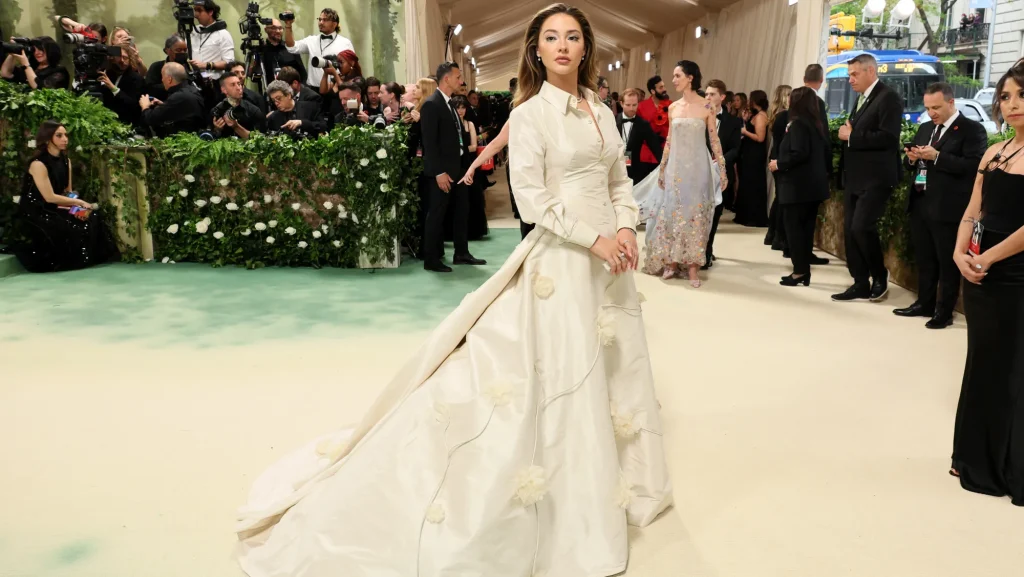
The emergence of budget-friendly brands presenting at an event typically reserved for the archetypes of high society raised questions about the spillover from fast fashion into the hallowed world of couture. With all the glamor and glitz, there lingers a sense of unease within the elite echelons of the traditional fashion sphere. It’s an unease shaped by a profound question — is the exclusivity of couture being commodified or democratized, and at what cost?
The Financial Gamble of The Gap Gala
For Gap, the strategic alliance with the Met Gala presented a significant departure from its demographic and brand imagery. The move aimed not just to echo the trends of the evening but to actively influence them. Couture is, by nature, novel, aspirational, and often beyond the immediate stylistic purview of the general public. Gap’s presence at the Gala sought to shrink this aspirational gap (pun not intended), offering a narrative that embraced the spirit of the occasion while reimagining the brand within an unconventional narrative of luxury and exclusivity.
The financial repercussions of hosting Gap couture at the Met Gala are not trivial. With the average cost of a Met Gala ticket well into the six figures and the cost of dressing a Gala attendee easily reaching the upper echelons of a million-dollar budget, the Gala is no ordinary marketing opportunity. For Gap, the possibility of significant sales and brand elevation amidst the world’s fashion connoisseurs is juxtaposed against the risk of dilution of its mass-market appeal with stark imitations of haute couture. The question remains — does this exposure translate into sustainable growth for the retail behemoth, or is it a fleeting foray into luxury merchandising?
Is Fast Fashion Forcing Retailers to Become Fashion Houses?
Retail giants are facing a unique pressure—a subtle but undeniable push towards high end, under the looming shadow of fast fashion. However, it’s not merely about the transformation of available products; it’s about redefining one’s identity in the industry. Traditional fast fashion micromodels are predicated on delivering the latest trends at an accessible price, but with Shein’s fast-tracking of those trends through its marketplace model, the retailers are left with a daunting question: adapt or become obsolete?
The answer to this existential query was, surprisingly, on display at the Met Gala. Ebay may not be a retailer in the strictest sense, but its business model is akin to a marketplace—a venue where everyday shoppers and couture-clad celebrities find common ground. This hint at democratizing couture not only reflects the desire of fashion houses to resonate deeply with the everyday consumer but also prompts a broader question—whether luxury has room for inclusivity without sacrificing its esteemed identity.
The Societal Thread: What Does This Move Suggest?
Beyond the economic implications and the strategic underpinnings of this move, Gap and Ebay’s waltz into the Met Gala spotlight signals something broader about the societal pulse. The aspiration, the hunger for taste, exclusivity, and the ineffable allure of the couture world, is no longer confined to the runway. The Halo Effect of couture is extending its aura to vendors of the common fabric, calling into question the very nature of luxury.
Is this a fleeting dance, choreographed for this moment alone, or might it prove the turning of a tide where every brand is its own patron saint, every garment a relic, and every consumer a curator of their personal narrative? Will the lines blur further, until every retailer is a connoisseur and every garment a story waiting to be told?
An Allegro with the Future
What draws retailers to compete for a place at the high-fashion table? The answer is complex yet rooted in one key concept: relevance that transcends the ordinary. The 2024 Met Gala, in particular, created a unique forum for redefining what it means to be fashion-forward in the retail world. It transcended the mere spectacle of a red carpet event, issuing a call to both the aspirational and the accessible. This event marked the beginning of a new era, merging the worlds of high fashion and everyday consumer trends into a cohesive narrative.
The post-Gala rumblings amongst the whispers of the well-suited aren’t just about what was worn, but what was the collective tugging of the garments. It’s an immersive tale, inviting all stakeholders on a newfound allegro with the future. While industry leaders scrutinize every detail, from hemlines to silhouettes, the underlying truth is that fashion within the retail world has begun a journey of resilience and craftsmanship. It’s a story that might redefine the esteemed guardians of couture or serve as an introduction to a provocative alliance still to be revealed.
In contemplating the trajectory towards greater accessibility in fashion, a critical quandary arises: Is there such a thing as too much accessibility? This concern is not unfounded, especially when considering the ramifications of mass-market retailers becoming coveted by the likes of Hollywood starlets. If middle-class stores ascend to a high-end status, an existential question looms large over where the average consumer is left to turn. The allure of exclusivity and luxury bears the risk of alienating the very demographic that mass-market brands originally sought to serve. This potential paradigm shift could create a void in the market, leaving a significant portion of consumers without a go-to option for affordable yet fashionable apparel. It underscores the need for a balanced approach that respects the roots and original mission of these brands while exploring new avenues of growth and recognition. The challenge, therefore, lies not in the pursuit of relevance or a position within the high-fashion tableau but in ensuring that this quest does not forsake the foundational principle of accessibility that defined these retailers.
Ultimately, as the curtains close, labeling these retail giants as pioneering leaders of fashion evolution or as risky adventurers flirting with fleeting trends is a topic for reflection. The essence of functionality comes before aesthetics when retail merges with high fashion. The gala was not merely an evening of splendor and sophistication; it represented a pivotal moment with the potential to significantly alter the dynamics of the retail industry.
